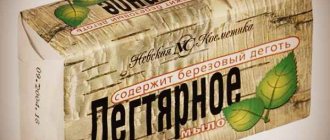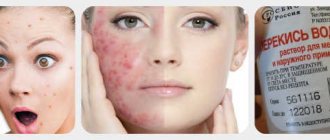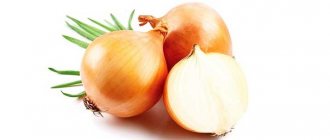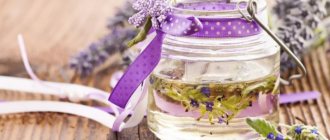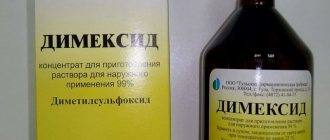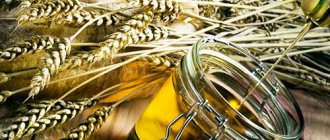What problems does facial celandine help solve? Can it be used to combat acne and acne, in what form? Are pharmaceutical remedies effective or should we pay attention to home remedies? Features of the use of medicinal plants in cosmetology.
Celandine is traditionally used to treat skin diseases. The juice of the plant removes warts and dry calluses; the decoction and lotions are used to reduce the inflammatory process in psoriasis, dermatosis, and burns. Official medicine has confirmed the anti-inflammatory effect of the medicinal herb, the ability to inhibit pathogenic microflora that infects wounds and burn surfaces.
Why celandine actually helps with acne
All the power of this plant in the fight against skin diseases is explained by its composition. These are several types of acids, including malic and citric acid, ascorbic acid, beta-carotene and alkaloids. It is this composition that allows people with problem skin to use this plant as a healing one.
The main advantage of celandine in the fight against acne on the face and back is its antiseptic and anti-inflammatory effect. It helps disinfect the skin, fights inflammation, and helps quickly heal all kinds of wounds, scratches and cuts.
The second no less important property of this plant is regenerating. It helps get rid of post-acne - red spots, scars and marks that often remain on the face and greatly spoil a person’s appearance.
Third , strengthening the skin’s immunity, which means that no microbes can cause illness in you, including acne.
The fourth is drying. Moreover, celandine does this so gently that the risk of getting burned is practically non-existent.
And, of course, one cannot fail to mention the nourishing, tonic and rejuvenating effect. It turns out that celandine for acne is an almost ideal remedy that helps get rid of acne in the shortest period of time.
The best homemade recipes for the face with celandine
Celandine helps men and women fight acne at home and at no extra cost.
You can prepare the product yourself without extra financial costs. During cooking, other components are added - alcohol, olive oil, vegetables, water, etc.
Infusion of celandine for acne
A face prone to acne should be washed not just with water, but with special tonics. You can prepare this from celandine. You will need 2 tablespoons of herbs, 500 ml of boiling water.
Follow the recipe:
- Combine the ingredients.
- Leave it in the dark for a day.
- Strain through cheesecloth and use.
The infusion should be used in the mornings and evenings. It cannot be stored for more than 3 days.
Cauterization with pure juice
If it’s spring or summer outside, then hurry to get celandine juice from the stems of the plant.
Be sure to read:
How to burn a pimple so that it goes away faster: effective methods of treatment in a short time
Procedure:
- Cut off the celandine at the time of flowering.
- Wash the raw materials and grind them using a blender or meat grinder.
- Squeeze the mixture through cheesecloth.
- Apply the resulting juice directly to the acne.
3-4 procedures per day are allowed. Always use freshly squeezed juice.
Decoction of celandine
Wipe the face with the decoction twice a day. This toner stops inflammation, cauterizes existing pimples and prevents new ones from appearing.
Prepare like this:
- Take 30 g of dry or fresh celandine.
- Pour half a liter of boiling water.
- Cook over low heat for a quarter of an hour.
- Leave to cool.
- Strain and use.
The resulting composition can also be used in the form of lotions on severely inflamed areas.
To do this, cut the gauze, fold it several times, soak it in the broth, wring it out and apply it to the problem area. Remove after 10 minutes.
Alcohol tincture of celandine and cucumbers
Tincture of cucumbers and celandine will help remove acne and unsightly pigmentation from the face.
For preparation:
- Prepare 35 g of celandine (dried or freshly picked) and moonshine, vodka or alcohol in an amount of 100 ml.
- Grind the herb and place it in a glass container.
- Pour in alcohol-containing liquid.
- Cover the container and leave for 14 days in the dark to infuse.
- Shake the composition every three days.
- Strain after the required time.
- Pour the tincture into a dark glass bottle and store in a dark place.
It is necessary to treat areas with inflammation in the morning and evening hours. If the skin is very oily, then you can wipe the entire face - the oil secretion will decrease.
4 celandine face masks
A mask is considered one of the most effective remedies. It contains several components.
It is applied to the epidermis for a long time. Within 15-20 minutes there is a medicinal and cosmetic effect, as a result of which acne disappears.
Here is an example of the 4 most effective homemade masks with celandine:
- Celandine + olive oil + egg yolk. Suitable for dry epidermis. You will need 1 chicken yolk, 10 ml of olive oil and 10 drops of celandine juice. Heat the composition to 40 degrees and use. Apply for 12 minutes. Then rinse with water. You can make a mask twice a week.
- Pistachio oil+black clay+celandine. Take 10 g of clay, 20 drops of celandine juice and 12 drops of pistachio oil. If the mixture is very thick, add water. Apply to steamed skin for 15-20 minutes. Then wash it off.
- Cucumber + alcohol + celandine. This recipe is prepared from 1 cucumber (grated with the skin), 30 g of celandine (ground in a meat grinder or finely chopped) and 300 ml of alcohol. Combine the ingredients and leave to infuse for three hours. Then squeeze it out. Apply the paste to your face for 20 minutes. Do it once a week.
- Celandine + aspirin + chloramphenicol. Mix a teaspoon of crushed celandine, 2 crushed acetylsalicylic acid tablets and 2 antibiotic tablets. To obtain a mushy consistency, oil can be added. Apply to the affected epidermis for a quarter of an hour every 5 days. The duration of treatment is a month.
Be sure to read:
Effective recipes with sea salt for the face: how to quickly get rid of acne at home
Masks are applied only to cleansed skin; it is advisable to steam it first. Remedies will help not only against acne and pimples, but also comedones, pustules and other ulcers. After systematic use, sebaceous secretions are reduced, and inflammation appears much less frequently.
Celandine oil
To prepare celandine oil (macerate), take 35 g of dry raw material and 120 ml of olive oil.
Proceed step by step:
- Keep the composition in a water bath for 45-50 minutes.
- Remove from the stove and cool.
- Pour into a glass container and leave for 14 days in a dark place.
- Shake the jar periodically.
- Strain the mixture and place in a dark bottle. Keep in the refrigerator.
The macerate is applied pointwise to inflamed areas twice a day. Oil is often used to make masks.
Celandine ice
An effective remedy for acne is celandine ice. It can be made from 35 g of dry or fresh raw materials and 400 ml of water.
Preparation:
- Fill the grass with water and place on low heat.
- Cook for 15-20 minutes.
- Cool. Strain.
- Pour into ice cube trays. Place in the freezer.
Problem areas are wiped once a day. The duration depends on the condition of the skin.
Contraindications
Celandine for acne, like any other remedy, has its contraindications. Among them:
- Chronic dermatitis.
- Vascular diseases.
- Wounds.
- Allergic reaction.
- Skin infectious diseases.
In some cases, addiction may develop, and then the celandine that you will use to treat acne will become completely useless.
Author - Anna Mikhailova, dermatologist-cosmetologist of the first category, specialist at the Academy of Scientific Beauty. Especially for the site “Treating Acne”.
How to make masks at home
There are also a lot of recipes for skin masks with such an ingredient as celandine, and the specific recipe is usually selected depending on the type of skin. Let's consider several popular mixtures:
- for dry skin, a mixture of yolk, a teaspoon of olive oil and 10 drops of celandine juice is suitable;
- oily skin requires a drying effect, and this can be achieved using a mixture of celandine decoction (two tablespoons), whipped egg white and a small amount of honey.
The compositions are applied to the skin for a third of an hour, after which they are carefully washed off with warm water.
Reviews
Larisa: “I always use only celandine, I don’t buy anything else. And I only get pimples from time to time.”
Natalya: “My grandmother recommended this herb to me. In the morning such a big pimple popped up and it hurt so terribly that it was just terrible! I immediately used the juice of this plant and by the evening the inflammation went away and the pain went away, I applied it again at night and in the morning the pimple noticeably decreased. Truly a miracle remedy.”
Olya: “And I’m only for pharmaceuticals. I don’t trust these herbs.”
Masks
Celandine against acne is also effective in the form of masks. After such a mask, be sure to apply your daily nourishing or moisturizing cream to the skin. A mask for normal and dry skin is prepared as follows:
- In a bowl, beat the yolk of one egg into a strong foam. You can use a whisk or fork to beat.
- After this, you need to add 15 g of olive oil to the yolk, as well as 12 drops of freshly squeezed celandine juice. If you have very sensitive skin, it is better to take 8 drops.
- Apply the mask to cleansed skin for 1/4 hour. Then rinse off with cool water.
You can also prepare the following mask for oily and normal skin:
- Beat the white of one egg into a fluffy foam and add half a teaspoon of honey.
- Pour 60 g of celandine decoction into this mass (we will tell you how to prepare it later in our article).
- We moisten gauze napkins in the resulting product and apply it to the face for a quarter of an hour.
- After this, you need to wash with clean water or a previously prepared herbal decoction.
Masks are usually used a couple of times a week until the rash disappears.
Celandine lotion
At home, from simple herbal ingredients, it is easy to prepare a lotion that is not inferior in effectiveness to expensive purchased drugs. Homemade natural medicine will help cope with small rashes, large purulent acne, uneven skin tone, and enlarged pores.
Article for you:
Nettle in gynecology: how to properly treat uterine bleeding
With regular use of the lotion, the activity of the sebaceous glands decreases, the untidy greasy film disappears, and pathogenic bacteria are destroyed. Preparation:
- Bring 450 ml water to a boil.
- Combine boiling water and vegetable mass (pre-grind 25 grams of dry celandine with your hands).
- Leave the product to infuse and strain after two hours.
Use homemade herbal medicine twice - morning and evening. Wipe your face for three to five minutes. Evening procedures will bring the greatest benefit - during sleep, the face relaxes, beneficial elements effectively penetrate the dermal tissue.
Store the lotion in the refrigerator; the healing properties do not disappear for three days. Warm the liquid slightly before each use.
Alcohol mask based on celandine for those with oily skin
Despite the undoubted benefits of lotions, tinctures and decoctions, alternative medicine recommends using masks for the most persistent acne. Home procedures allow you to get rid of defects for a long time - additional components increase the effectiveness of celandine, have a certain effect on formations, and improve the condition of the dermis.
If the skin is too oily, it is recommended to prepare an alcohol mask with cucumber - the active elements contained in the vegetable gently cleanse the face while reducing the work of the sebaceous glands. Preparation:
- Grate a small cucumber on a fine grater.
- Chop celandine leaves (25 g) and mix with cucumber gruel.
- Pour alcohol (15 ml) into the plant mixture and mix thoroughly.
- Leave the mixture in the refrigerator, strain, and squeeze out after 2 hours.
- Beat the egg white, add potato starch (25 g), pour in half of the prepared alcohol tincture, mix.
- Pour the second half into a glass bottle and leave for the next procedure.
Article for you:
How to treat cough with birch leaves
Apply the product in a thin, even layer on your face and leave for half an hour (the mixture should dry out a little). Remove and rinse with cool water.
Repeat the procedures every other day - more frequent use of the mask will result in dry skin and the appearance of peeling. You can add other ingredients - natural yogurt, low-fat sour cream, any fruit (pre-mash into a homogeneous puree).
Celandine for skin: properties and contraindications
The very popular name of this plant suggests that it can solve skin problems - CLEANITY . From time immemorial, people have studied the properties of this plant and based on these properties it was named.
This wonderful plant grows everywhere. In the spring, you can use fresh plant juice and prepare dry raw materials for preparing oils, decoctions, and tinctures.
If for some reason you cannot make your own products with this plant, there are quite a lot of ready-to-use products in pharmacies.
Juice, decoction, infusion, oil, tincture of celandine can cure a fairly large number of skin diseases.
Possibilities of a medicinal plant
The antibacterial and antimicrobial activity of celandine is based on the presence of the alkaloids berberine and chelidonine in the herb. They exhibit an inhibitory effect on groups of microorganisms, including Escherichia coli, dysentery bacillus and staphylococcus. In relation to the latter, they act selectively, so treatment of staphylococcal infections can take place with different productivity indicators.
For oily skin
The use of celandine in cosmetology is associated, first of all, with its anti-inflammatory and antimicrobial effect. In folk medicine, it is considered a good remedy for solving oily skin problems.
It is characterized by:
- large, noticeable pores;
- increased sebum secretion, which manifests itself as an oily sheen in the forehead, cheeks and chin;
- clogged pores, visually noticeable as blackheads;
- the formation of focal inflammations - pimples, the incorrect removal of which leads to the formation of scars and traces of post-acne.
Due to the fact that oily skin is prone to inflammation, and celandine for acne reduces these inflammations, it is logical to include the product in your daily care. But with the use of medicinal herbs, as with caring for problem skin, not everything is so simple.
It is believed that if you have oily skin, acne will definitely bother you. But with proper care, you can minimize the risk of their occurrence.
A pimple or acne is an inflamed area of skin. Inflammation develops in the pores where skin secretions accumulate. It serves as an indicator that local immunity has not coped with the growth of microorganisms, for which the sebaceous environment is an ideal place for reproduction.
There are many reasons for the decrease in the activity of local immunity - from hormonal changes to the habit of squeezing out acne with your hands.
Therefore, the right solution for caring for oily skin is proper and regular cleansing. By washing away oily secretions every day using a special foam or gel, you reduce the risk of its accumulation and the development of inflammation. You can use celandine for acne as an additional remedy to reduce the severity of inflammation.
For problem skin
Consult with a cosmetologist about the choice of cosmetics for everyday care or opt for medicinal cosmetics, which can be bought at the pharmacy. Your basic routine should include morning and evening cleansing, toning and moisturizing. With this approach, the condition of the skin will improve significantly, and the rash will bother you much less often.
For existing rashes, use anti-inflammatory, sebum-regulating agents. At home, you can use celandine by following the following recommendations.
- Do not apply pure juice to your skin. “If celandine gets on healthy skin, a burn may occur,” notes dermatovenerologist Tigran Galstyan. “This violates the integrity of the skin.” In such areas, infection actively develops, since local immunity is reduced, microorganisms easily penetrate the epidermis and the underlying layer of skin. Its areas become inflamed, and if there are injured and thinned areas of the epidermis in the immediate vicinity, the infection spreads further. Injured areas are also susceptible to hyperpigmentation. Signs of photoaging and the formation of age spots are especially pronounced under the influence of the sun.
- Use alcohol solutions spot on. It is believed that celandine tincture is most effective against rashes and acne. But you can only use it locally, carefully applying it directly to the pimple with a cotton swab. Alcohol has a drying effect, and the medicinal plant extract inhibits pathogenic microflora - the source of inflammation and redness. It is absolutely unacceptable to wipe your entire face with this product. Alcohol disrupts the normal functioning of the skin, literally erases the outer protective covering from it. This provokes increased oiliness, as the epidermis tries to restore the protective barrier. At the same time, the skin becomes dehydrated, looks dry, and fine wrinkles quickly appear on it. But acne remains, there are more of them, as the epidermis loses local immunity and the ability to cope with infection.
- Do not steam your face or apply exfoliants. You can often find recommendations for steam baths with celandine against acne and blackheads, after which you need to rub the skin with sea or table salt. Such procedures are a direct path to a total inflammatory process that will affect all areas of the face without exception. In the form of a steam bath, celandine is useless, since its active substances do not come into contact with the skin. At the same time, the steaming process itself stimulates the spread of infection to healthy areas of the skin, which completes and aggravates scrubbing with a harsh abrasive. Sea salt, sugar and other substances with sharp scrubbing particles cause microscopic damage to the epidermis. They serve as new gates for infection and the next foci of inflammation.
Celandine in cosmetology can be used to treat pimples and blackheads in the form of an aqueous infusion for wiping inflamed skin and reducing the severity of infection. Alcohol tincture is used only for local acne treatments, pointwise.
Cosmetics based on celandine are on sale. Home care for active rashes can include Bee Celandine, which contains essential oils, salicylic acid, and silver ions. In combination, the substances have an anti-inflammatory effect and suppress the development of acne and pimples.
Rejuvenation product
“There is a universal recipe for prolonging the youth of the skin and refreshing the complexion,” says cosmetologist Elena Tselkovskaya. — Take a sprig of the plant, pour one and a half glasses of water, heat and boil for about five minutes. Then leave the infusion for an hour, cool.”
According to Elena Tselkovskaya, this recipe can be used to treat skin diseases, including acne and dermatitis. And as a tonic, rejuvenating agent.
However, it is not entirely correct to position celandine for the face against wrinkles. An aqueous infusion of a medicinal plant really improves skin health, as it normalizes microflora, eliminates inflammation and prevents the formation of new ones. But it has nothing to do with the formation or, conversely, reduction of wrinkles.
To eliminate wrinkles, regular moisturizing of the skin and procedures that involve the deep layers of the dermis are required. Celandine in any form works only on the surface of the epidermis, and will not help cope with either facial wrinkles or signs of skin aging as a result of dehydration.
Fighting pigment spots
In folk medicine, celandine is recommended for the face against age spots. But doctors warn about the dangers of popular recipes.
“After using celandine, traumatic skin pigmentation occurs at the site of its impact,” says Inna Voloshchenko, chief physician of the Kyiv Institute of Beauty. “If a person comes to me for an appointment who has tried to get rid of spots on the skin in this way, we send him for a consultation with an oncologist, since the skin in this area has received extremely severe trauma.”
It is unacceptable to use pure celandine juice to combat age spots. They do not eliminate the problem, but on the contrary, they make it worse. Only acid-based cosmetics can solve the problem of pigmentation, while the mechanism of action of this medicinal plant is completely different.
In the form of solutions or celandine oil, the plant does not have a significant effect on the epidermis and does not stimulate the exfoliation of the stratum corneum, in which natural pigment is retained. It is futile to expect any skin whitening in this case.
Celandine tincture
A concentrated tincture made from fresh herbal leaves is one of the most popular remedies offered by alternative medicine against acne. Using a home remedy requires special care - if used incorrectly, there is a risk of causing a burn.
It is recommended to treat large lesions spot-on; if there are a lot of pimples, it is better to dilute the tincture with half-boiled chilled water. Step by step recipe:
- Wash fresh grass leaves, allow moisture to drain, and dry.
- Chop the plant material (50 grams) into small pieces and place in a dark glass bottle.
- Fill with alcohol and high-quality homemade pervach (210-220 ml).
- Seal the container tightly and shake vigorously several times.
- Leave to infuse in a cool, dark place for two weeks, during which time periodically shake the contents of the bottle.
- Strain and be sure to squeeze out the cake.
After pouring the product into a clean bottle, store it in the refrigerator. Treat large formations on the face three times a day.
Herbal cleanser
Daily washing with a herbal decoction will bring no less benefit to the skin occupied by acne. The combination of several herbs has a wide range of effects - eliminates rashes, saturates the epidermal tissue with vitamins, evens out color, and rejuvenates.
The main condition is to use the herbal medicine constantly; rare procedures will not bring much benefit to the face. Preparation:
- Mix chamomile, celandine, string, calendula (take the components in equal parts, about 10 grams each).
- Grind the plant material and steam with boiling water (200 ml).
- Place the container in a water bath and simmer under the lid for a quarter of an hour.
- Remove without removing the lid, leave to cool, strain.
Wash as usual - using your favorite soap, foam, gel. Complete the procedure by rinsing with the prepared broth. If there is time, traditional medicine recommends a light massage - stroking, patting the face with your fingertips helps the penetration of beneficial elements into the epidermal tissue.
Celandine oil
For increased sensitivity of the skin, alternative medicine recommends preparing celandine oil. A home remedy, replete with medicinal properties, gently and carefully cleanses the face of acne, saturates the dermis with useful elements, and promotes healing. Preparation:
- Cut the green herbs (100 gr.), fold, without compacting, into a glass jar.
- Place on the stove and slightly heat any refined oil (usually an olive product is used).
- Pour warm oil over the green mixture and stir.
- Leave to infuse at room temperature for three days, strain.
Wipe the acne-affected areas of the face with the product. The number of procedures per day is at least two. It is allowed to alternate the use of oil with other alternative medicines. Comprehensive treatment for a large number of acne will be especially useful.
Pros and cons of use
Celandine herb is a medicinal plant that helps restore facial skin to a healthy and fresh appearance, but it should be used carefully and with caution. If the root cause of the problem is hormonal imbalance or other serious disorders, masks and tinctures will only have a temporary effect.
Dermatologists do not recommend using celandine to remove age spots on the face - an unsuccessful attempt to remove one spot often leads to deep damage to the epidermis.
pros
The benefits of treating acne with herbal remedies are:
- antibacterial, antiseptic effect provided by alkaloids;
- anti-inflammatory effect;
- drying acne, thanks to the content of succinic, citric and malic acids;
- reduction of lesions;
- relieving irritation;
- acceleration of epidermal restoration due to vitamins A, E, C;
- improvement of tone;
- safety when used correctly.
Creams and tonics with the addition of plant extract refresh, cleanse the skin and maintain its health. To remove age spots, it is preferable to use pharmaceutical preparations with celandine and additional active ingredients that will help remove minor cosmetic defects without the risk of damaging the skin.
Minuses
The sap of the plant causes significant burns, and preparing tinctures at home requires care, accuracy, and strict adherence to the proportions specified in the recipes. The disadvantages of using celandine-based products include the development of addiction - it is necessary to take intervals during the treatment process. After 3–4 hours, yellow-brown marks may appear on the skin after using decoctions or compresses.


